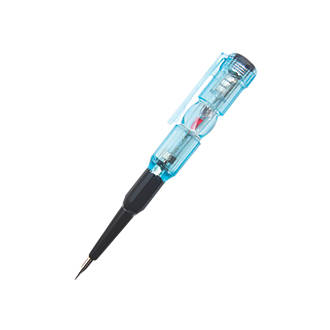You posted this in electrics UK, but your location is listed as Tokelau, I don't know anything about Tokelau but wikipedia tells me they are part of new Zealand, so I'm guessing they follow new zealand electrical rules.
A neon screwdriver lights up when there is sufficient voltage between the conductor under test and the user. The voltage on the user is presumed to roughly earth potential with a sufficiently low impedance to conduct enough current to light the neon. Therefore when operating as expected the tester should light up when there is a significant voltage between the userconductor the screwdriver is in contact with and earth. The voltage on and impedance of the user is not necessarily well defined though, as it depends on stray capacitance. This can make neon screwdrivers unreliable, which has lead professional electricians in the UK to shun them.
In defense of neon screwdrivers though, they can do something which traditional multimeters and two pole testers can't and that is tell you when an entire enclosure and everything in it is live.
Normally the Neutral conductor of an electrical supply is connected to ground somewhere and the neutral conductors throughout the installation are close enough to earth potential that they are unlikely to light up a neon screwdriver. A neon screwdriver lighting up on a neutral wire on such a supply likely indicates a broken neutral conductor somewhere.
There exist supplies though that don't have a neutral, and there also exist plugs that are non-polarised, so the nominally neutral conductor in some situations, particularly those involving portable equipment, may actually be live, not because of any faults but just because of the nature of the supply.
Blue is the harmonized color for neutral. However not all countries use harmonized colors and even in countries that use them now older wiring may use other colors. In the UK the pre-harmonization color codes were L1 - Red, L2 - yellow (or white on very old installs), L3 - blue and N - black. Normally single phase circuits used Red for live and Black for neutral, but i'm sure i've seen photos of old conduit installs which maintained the different phase colors into the single phase final circuits.
From what I can ascertain from google it seems that the pre-harmonization AU/NZ colors were similar to the british ones, but with White instead of Yellow for L2. However unlike the UK which moved completely over to the harmonized colors it appears that in AU/NZ the "old" colors are still in use for building wiring while the harmonized colors are often used for flexible cords.
edit: fix typo.



